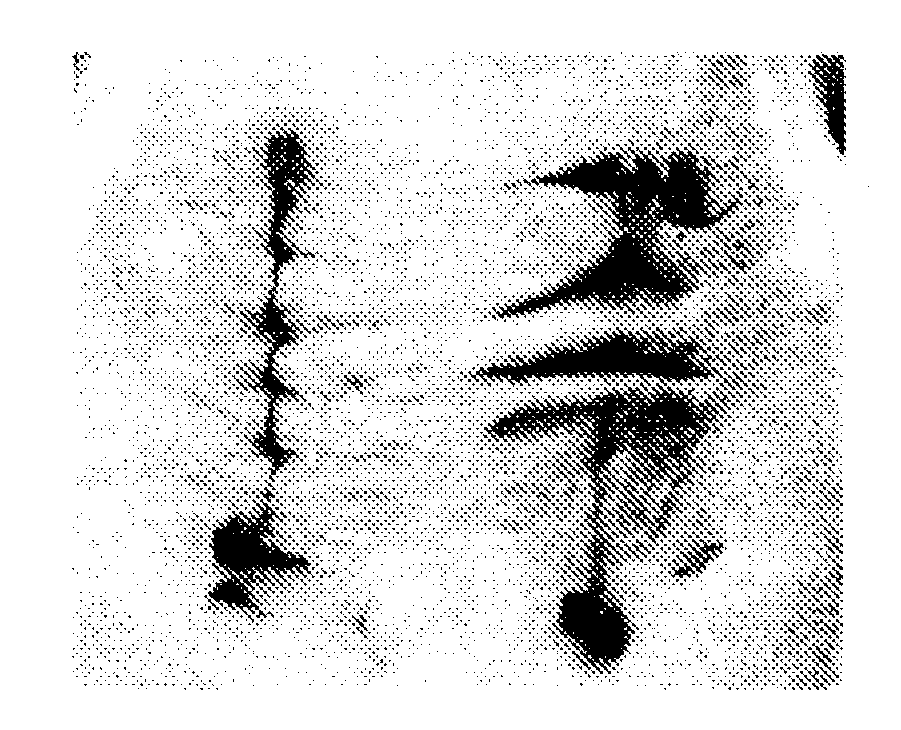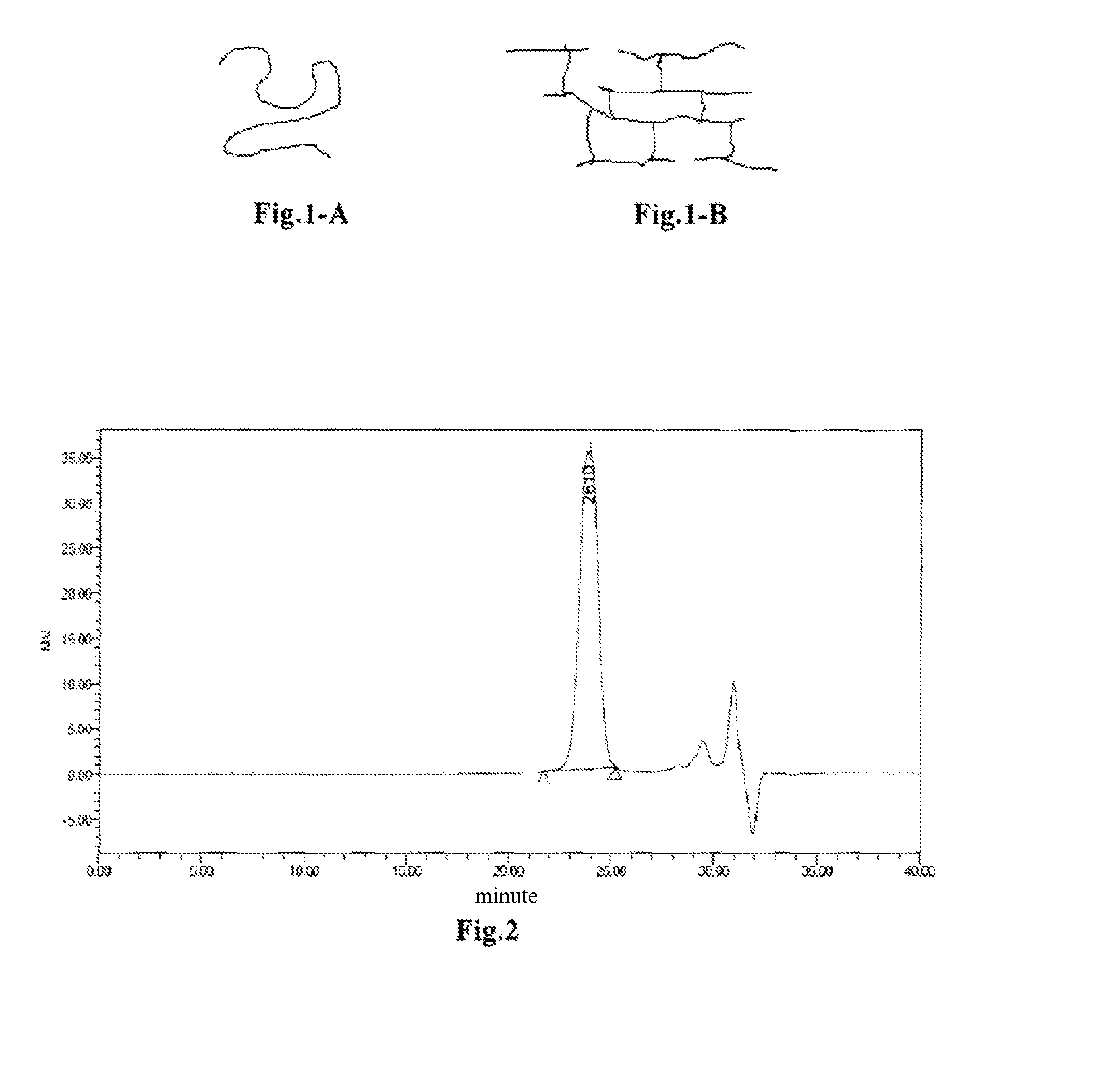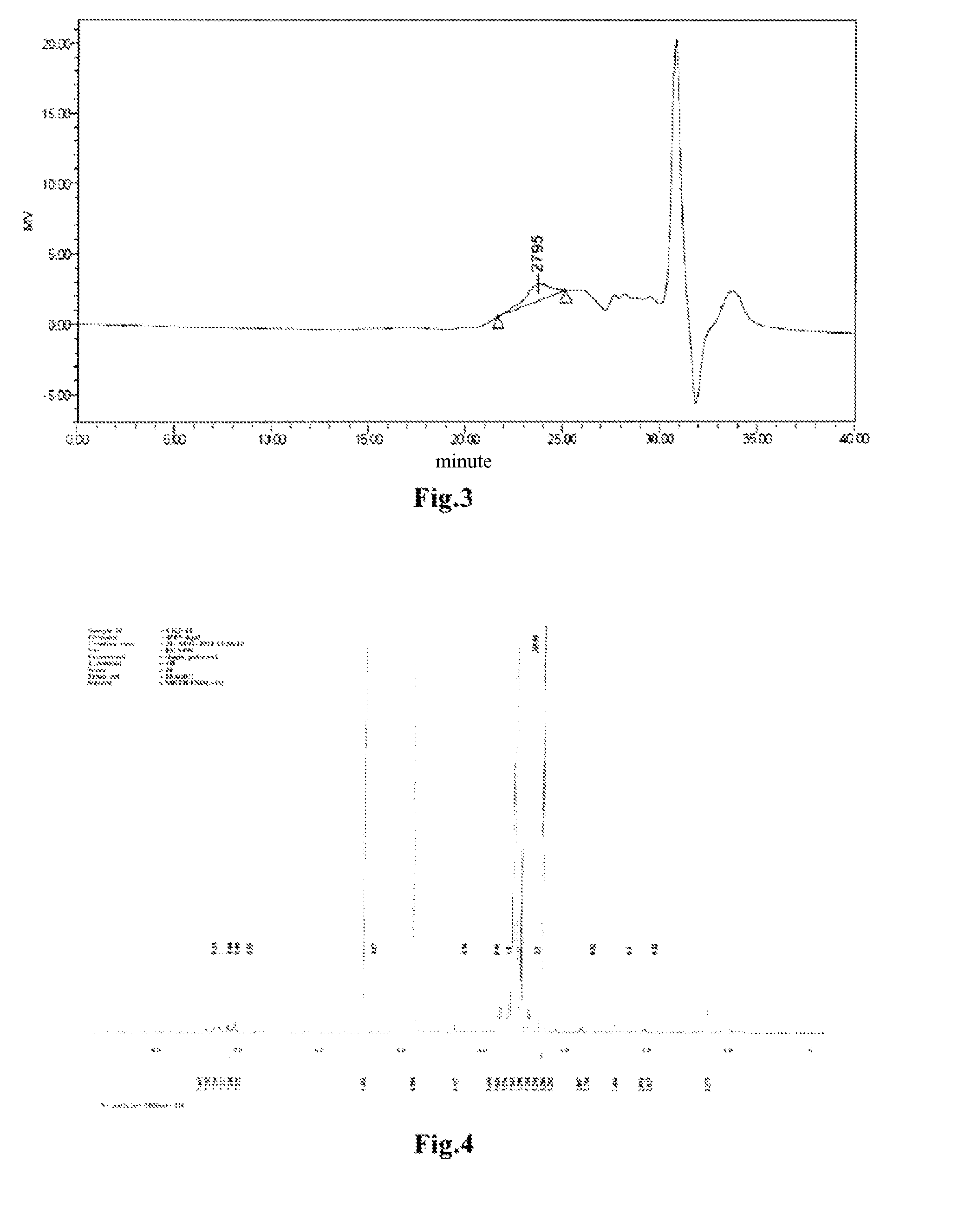Biodegradable medical adhesive and preparation method and use thereof
a biodegradable, medical adhesive technology, applied in the field of medical adhesives, can solve the problems of reducing the practical value of surgical adhesive/sealant, affecting and reducing the practical value of surgical adhesives, etc., to achieve good biodegradability and improve the biodegradability of medical adhesives.
- Summary
- Abstract
- Description
- Claims
- Application Information
AI Technical Summary
Benefits of technology
Problems solved by technology
Method used
Image
Examples
preparation example 1
Synthesis of bis-α-cyanoacrylic Acid PLA-PEG-PLA Ester
[0103]The syntheses of bis-α-cyanoacrylic acid esters are substantially similar. A method similar to those disclosed in the references (U.S. Pat. Nos. 3,975,422, 4,012,402, 4,041,061) is used for the syntheses. It is illustrated in this example by taking bis-α-cyanoacrylic acid PLA-PEG-PLA ester as an example.
[0104]Bis-α-cyanoacrylic acid PLA-PEG-PLA ester has the following structure:
[0105]wherein the specific middle segment PLA-PEG-PLA block copolymer (1-1) was synthesized by using the following process:
[0106]10.13 g (10.13 mmol) of PEG1000 and 10.37 g (72 mmol) of lactide were added to a reaction flask, and heated to 70° C. to melt the solid. The reaction flask was evacuated and filled with argon. This operation was repeated for three times. After completely removing water from the reaction solution, 20 mg of a stannous octoate solution was added, and the reaction solution was further evacuated till no bubbles present therein. ...
preparation example 2
Examples of Other bis-α-cyanoacrylates
[0114]The following compounds were synthesized by using a method similar to Example 1, with the use of different middle segments:
[0115]Bis-α-cyanoacrylic acid diethylene glycol ester
[0116]1H NMR (CDCl3, δ ppm): δ 7.07 (s, 2H), δ 6.67 (s, 2H), δ 4.44 (t, 4H), δ 3.82 (t, 4H), as a yellowish oily liquid
[0117]Bis-α-cyanoacrylic acid tetraethylene glycol ester
[0118]1H NMR (CDCl3, δ ppm): δ 7.08 (s, 2H), δ 6.65 (s, 2H), δ 4.44 (t, 4H), δ 3.80 (t, 4H), δ 3.66-3.70 (m, 8H), as a yellowish oily liquid
[0119]Bis-α-cyanoacrylic acid PEG600 ester
[0120]1H NMR (CDCl3, δ ppm): δ 7.08 (s, 2H), δ 6.66 (s, 2H), δ 4.43 (m, 4H), δ 3.68 (m, 54H)
[0121]Bis-α-cyanoacrylic acid PEG1000 ester
[0122]1H NMR (CDCl3, δ ppm): δ 7.08 (s, 2H), δ 6.71 (s, 2H), δ 4.42-4.44 (m, 4H), δ 3.57-3.80 (m, 90H), as a yellowish oily liquid
[0123]Bis-α-cyanoacrylic acid PEG2000 ester
[0124]1H NMR (CDCl3, δ ppm): δ 7.09 (s, 2H), δ 6.66 (s, 2H), δ 4.42-4.44 (t, 4H), δ 3.57-3.80 (m, 232H), as a wh...
preparation example 3
Mono-α-cyanoacrylate
[0136]This type of compounds was synthesized by using general methods as reported in literatures ((Li Jingfeng, Sun Xiping, Preparation and Application of α-Cyanoacrylate Adhesives, Chinese Journal of Colloid and Polymer, 1999, 17(3): 33-34; CN 87103468A), i.e., polymerizing a cyanoacetate and an aqueous solution of formaldehyde in the presence of a basic catalyst to form a low molecular weight prepolymer, and then depolymerizing and refining at a high temperature under reduced pressure. Taking n-butyl cyanoacrylate as an example, the chemical reaction formula was described as follows:
[0137]whereby mono-α-cyanoacrylate was obtained.
PUM
| Property | Measurement | Unit |
|---|---|---|
| temperature | aaaaa | aaaaa |
| pore size | aaaaa | aaaaa |
| temperature | aaaaa | aaaaa |
Abstract
Description
Claims
Application Information
 Login to View More
Login to View More - R&D
- Intellectual Property
- Life Sciences
- Materials
- Tech Scout
- Unparalleled Data Quality
- Higher Quality Content
- 60% Fewer Hallucinations
Browse by: Latest US Patents, China's latest patents, Technical Efficacy Thesaurus, Application Domain, Technology Topic, Popular Technical Reports.
© 2025 PatSnap. All rights reserved.Legal|Privacy policy|Modern Slavery Act Transparency Statement|Sitemap|About US| Contact US: help@patsnap.com



